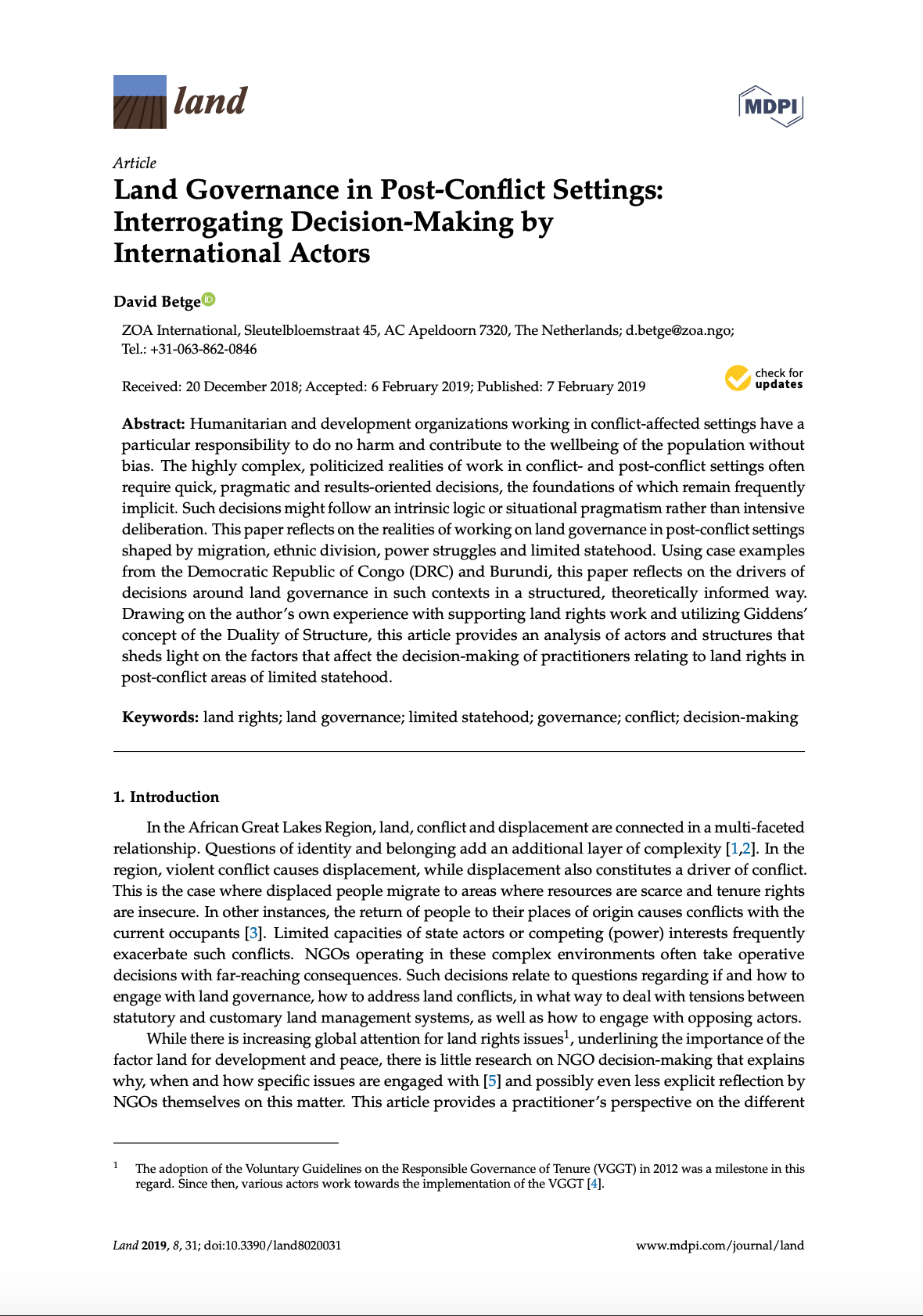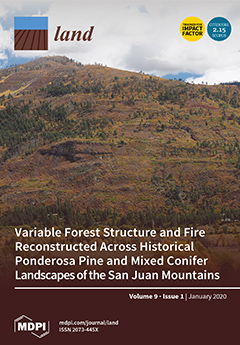Resources
Displaying 1786 - 1790 of 2258Analysis of High Temporal Resolution Land Use/Land Cover Trajectories
In this study, methods, originally developed to assess life course trajectories, are explored in order to evaluate land change through the analysis of sequences of land use/cover. Annual land cover maps which describe land use/land cover change for the 1985–2017 period for a large region in Northeast Brazil were analyzed. The most frequent sequences, the entropy and the turbulence of the land trajectories, and the average time of permanence were computed. Clusters of similar sequences were determined using different dissimilarity measures.
Land Governance in Post-Conflict Settings: Interrogating Decision-Making by International Actors
Humanitarian and development organizations working in conflict-affected settings have a particular responsibility to do no harm and contribute to the wellbeing of the population without bias. The highly complex, politicized realities of work in conflict- and post-conflict settings often require quick, pragmatic and results-oriented decisions, the foundations of which remain frequently implicit. Such decisions might follow an intrinsic logic or situational pragmatism rather than intensive deliberation.
Determinants of Land Use/Cover Change in the Iberian Peninsula (1990–2012) at Municipal Level
This work analyzes the determinants associated with main land use/cover changes in the Iberian Peninsula during the 1990–2012 period using a decision tree model. Our main objective is to identify broad-scale patterns that associate the characteristics of geographic areas with the dominant land use/cover change process based on CORINE Land Cover (Coordination of Information on the Environment) and defined in a previously published work. Biophysical, structural and socioeconomic variables were considered as potentially explanatory of the dominant change process at municipal scale.
Variable Forest Structure and Fire Reconstructed Across Historical Ponderosa Pine and Mixed Conifer Landscapes of the San Juan Mountains, Colorado
Late-1800s land surveys were used to reconstruct historical forest structure and fire over more than 235,000 ha in ponderosa pine and mixed conifer landscapes of the San Juan Mountains, Colorado, to further understand differences among regional mountain ranges and help guide landscape-scale restoration and management. Historically, fire-resistant ponderosa pine forests with low tree density and relatively frequent fire, the most restorable forests, covered only the lower 15%–24% of the study area. The other 76%–85% had dominance by mixed- to high-severity fires.
Contrasting the Effect of Forest Landscape Condition to the Resilience of Species Diversity in a Human Modified Landscape: Implications for the Conservation of Tree Species
Using landscape moderation insurance and Intermediate Disturbance Hypothesis (IDH) as frameworks, this study assessed the response of local assemblage among different land use regimes (mean β-diversity), using the Jaccard dissimilarity matrix in contrasting Human Modified Forest Landscapes (HMFLs). The study was conducted at the relatively simplified Mafhela Forest Reserve and the complex Thathe Vondo Forest Reserve in South Africa. The patterns of overall β-diversity between HMFL and State-protected Indigenous Forests (SIF) were compared and the leading change drivers were then untangled.




